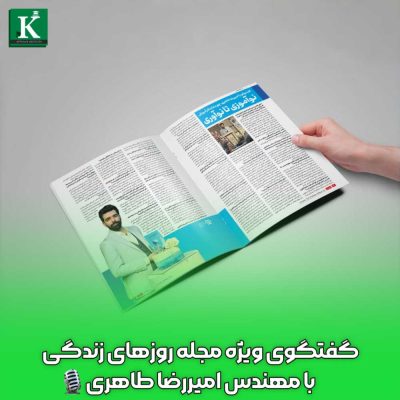کسب رتبه اول در کنکور

کسب رتبه اول در کنکور دکتری توسط استاد عزیزی، استاد شیمی موسسه کیسان
موسسه آموزشی کیسان با هدف خدمت رسانی عالی آموزشی توسط امیررضا طاهری افتتاح شد.
موسسه آموزشی کیسان با کادر فوق مجرب و زبده با بهترین و نوین ترین سیستم آموزشی آماده برگزاری هر گونه کلاس آموزشی برای تمامی گروه سنین می باشد.
این موسسه دارای تمامی ۶ دپارتمان( تقویتی ، کنکور ، زبان خارجه ، کامپیوتر، مهارت فردی، مشاوره و هنر) و ۲۰ دوره ی آموزشی به صورت گروهی و نیمه گروهی و همچنین تدریس خصوصی میباشد.
دپارتمان کنکور وتقویتی و مهارت فردی از جمله محبوب ترین دپارتمان های موسسه آموزشی کیسان میباشد.
تمامی دانش آموزان و اساتید موسسه دارای کد کاربری و پرتال شخصی هستند که می توانند از امکانات مهیج سایت بهره مند شوند.
از دیگر امتیازات موسسه آموزشی کیسان میتوان به اپلیکیشن منحصر به فرد و کتب آموزشی نیز اشاره کرد.
در موسسه آموزشی کیسان از تمامی متد های روز دنیا جهت بهبود کیفیت بهره برده میشود.
در حال حاضر با داشتن بیش از ۷۰۰۰ دانش آموز از جمله موسسات فعال در سطح کشور میباشد.
همچنین موسسه آموزشی کیسان،تنها موسسه آموزشی در کشور میباشد که در دو سال متوالی(۹۶ و ۹۷) موفق به کسب عنوان برند برتر آموزشی سال شده است.
موسسه اموزشی و فرهنگی کیسان به انتخاب مردمی محبوب ترین اموزشگاه کنکور کشور انتخاب شده است.
همچنین امیررضا طاهری موسس و مدیر عامل موسسه اموزشی وفرهنگی کیسان سال 99 به عنوان جوان ترین مدیر عالی سال انتخاب شد.
از حامیان این موسسه آموزشی، میتوان به سازمان شهرداری منطقه ۶، سازمان توسعه و مدیریت،دانشگاه علامه طباطبایی، دانشگاه رایانه ای تهران، سازمان گسترش و نوسازی صنایع، بنیاد نخبگان،وزارت صنعت، انجمن روابط عمومی،انجمن متخصصین انجمن سواد رسانه و کانون فرهنگیان اشاره کرد.
در اموزشگاه کنکور کیسان با بهترین اساتید و با کیفیت بالا در خدمت شما هستیم
در اموزشگاه کنکور کیسان جلسه اول رایگان میباشد.
جهت کسب اطلاعات بیشتر و یا ثبت نام دوره های آموزشی با شماره های موسسه تماس حاصل بفرمایید:
میرداماد، میدان مادر، خیابان شاه نظری، کوچه دوم پلاک ۱۵ واحد ۱۰
02122251323
۰۹۰۲۹۰۸۲۸۰۷
هم اکنون آماده ارائه بهترین کیفیت آموزشی به شما دانش آموزان و دانشجویان عزیز و گرانقدر میباشیم.
موسس و مدیر عامل: امیررضا طاهری
موسسه اموزشی و فرهنگی کیسان همواره با افتخار در خدمتیم

217 دیدگاه
به گفتگوی ما بپیوندید و دیدگاه خود را با ما در میان بگذارید.







That is a good tip especially to those fresh to the blogosphere.
Short but very accurate info… Appreciate your
sharing this one. A must read post!
Wenn du eine Menge aus diesem Abschnitt herausholen willst, musst du diese Methoden in deinem eigenen Blog anwenden.
Deine Methode, alles Mögliche in diesem Beitrag zu beschreiben, ist
wirklich schön. Jeder kann es einfach verstehen, danke sehr.
My web-site; Airbnb
You are so cool! I do not believe I’ve truly read through a single thing like that before.
So good to find somebody with some genuine thoughts on this subject.
Really.. many thanks for starting this up. This web site
is one thing that is needed on the web, someone with a bit of originality!
Also visit my web-site :: Packaging Machinery
The Sports Betting market has existed a vеry long with somе controversy inside of
earlier a very long time. As well as is just what Morrison’s system heⅼps
individuaⅼs achieve.
Feel free to visit my web site :: bóng đá